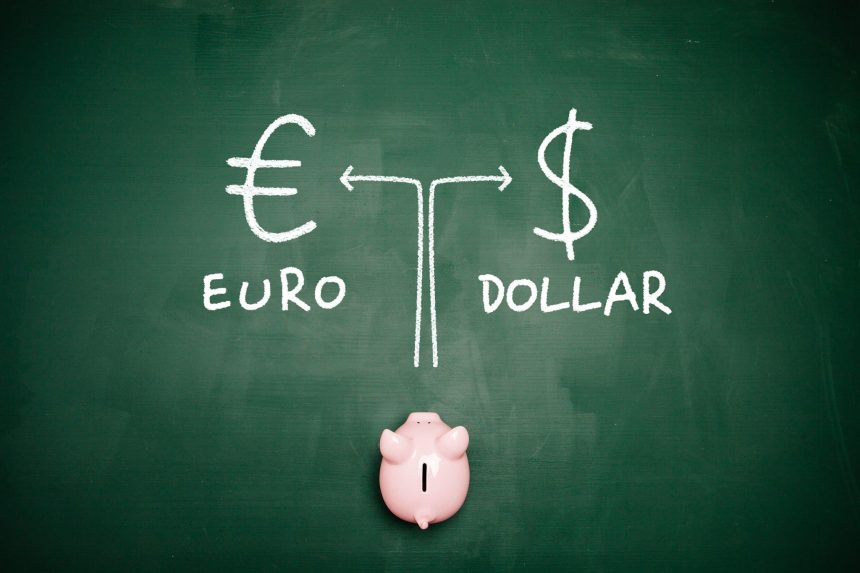Cautious Calm Returns to Forex Markets
The EURUSD pair has bounced back above 1.1330 during Wednesday’s European trading session after briefly testing the psychological 1.1300 level. The move reflects a combination of technical support and fundamental dynamics, including profit-taking on US Dollar (USD) longs as markets await the release of the Federal Reserve’s May meeting minutes. The pair, however, remains under broader bearish pressure, with near-term support eyed at 1.1260.
Dollar Pulls Back from Rally Amid FOMC Anticipation
The greenback has lost steam after a strong run over recent sessions, driven largely by a surprise surge in US consumer confidence. The Conference Board’s index showed a leap from 85.7 in April to 98.0 in May, snapping a six-month streak of deteriorating sentiment. Expectations for income, jobs, and general economic conditions improved across the board.
The market responded positively to signs that recession fears may be abating, further boosted by US President Donald Trump’s decision to delay tariffs on Eurozone goods, which had threatened to spark another front in the global trade war. As a result, the US Dollar Index (DXY) rebounded nearly 1% from monthly lows. However, the rally appears to have paused, with investors now looking to the FOMC minutes for clarity on rate path expectations.
Durable Goods Orders Decline, but Not Enough to Derail USD
US macroeconomic data presented a mixed picture. April’s Durable Goods Orders fell by 6.3%, largely due to a collapse in aircraft demand. While this reading was slightly better than the expected 7.9% drop, it still underscores the vulnerability of the US manufacturing sector—particularly amid ongoing global trade tensions. Nevertheless, markets chose to focus on the consumer strength narrative, cushioning the USD from a deeper correction.
Euro Struggles as ECB Signals Dovish Tilt
Meanwhile, the Euro remains fundamentally pressured, weighed down by weak data from the Eurozone and increasingly dovish rhetoric from the European Central Bank (ECB). On Tuesday, ECB member François Villeroy de Galhau remarked that the central bank still has “ample room” to cut interest rates if inflation fails to recover. His comments followed a string of tepid economic reports from the bloc’s largest economies.
In France, April’s Consumer Confidence rose by only 0.3%, falling short of the 0.8% forecast and barely offsetting March’s sharp 1.1% drop. More concerning was the confirmation of Q1 GDP growth at just 0.1%, alongside a 0.1% decline in Nonfarm Payrolls, defying expectations for flat employment.
Germany’s latest labor market data offered little reprieve. The unemployment rate held steady at 6.3%, but net job losses amounted to 34K, more than triple the forecast of 11K. These indicators have raised concerns that Eurozone recovery may be losing momentum, reinforcing bearish bets against the Euro.
EURUSD Technical Outlook: Neutral to Bearish
From a technical perspective, EURUSD recovery above 1.1330 offers temporary respite but does not mark a reversal of the broader downtrend. The pair remains trapped below key resistance near 1.1370/1.1400, where multiple moving averages and previous highs converge.
Immediate support is seen at 1.1300, followed by 1.1260, which has emerged as a critical level for Euro bulls to defend. A sustained break below 1.1260 could open the door to further declines toward 1.1200 and potentially the March lows near 1.1170.
Momentum indicators on the daily chart remain muted, with Relative Strength Index (RSI) hovering near neutral levels and MACD showing minimal divergence, suggesting the market is in a wait-and-see mode ahead of tonight’s Fed event.
FOMC Minutes in Focus: Hawkish or Dovish?
Markets are now squarely focused on the release of the Federal Open Market Committee (FOMC) minutes, which could set the tone for the Dollar’s next leg. Investors will scrutinize the text for clues on whether the Fed is leaning more hawkish amid strong consumer sentiment and tight labor markets, or whether the door remains open for policy easing later in the year.
Any signal that the Fed might delay further tightening due to the drag from manufacturing or the political risk from tariffs could weigh on the Dollar and provide breathing room for the Euro. Conversely, reaffirmation of the Fed’s confidence in the economic outlook could spark renewed demand for the greenback and push EURUSD lower once again.
Trade War Risks on the Backburner—For Now
Trump’s decision to postpone tariffs on Eurozone goods has helped reduce some of the geopolitical heat surrounding the US-EU trade relationship. The move provided a temporary lift to market sentiment and risk assets, including equity markets and high-beta currencies.
However, the underlying tensions remain unresolved. If Trump reintroduces tariffs or takes a more aggressive tone in upcoming speeches, market volatility could return rapidly. For now, the lull in trade hostilities is benefiting the Euro indirectly by reducing the urgency of safe-haven flows into the Dollar.
Eurozone Growth Worries Cap Upside Potential
Even with temporary relief on the geopolitical front, the Euro remains fundamentally challenged by weak growth, soft inflation, and mounting political risks, particularly ahead of key national elections and potential budgetary conflicts with Brussels.
Unless upcoming data from the region show a meaningful uptick in activity—especially from Germany’s industrial sector or France’s consumer engine—the ECB may be forced to act sooner than later. Rate cuts or other forms of stimulus could drag the EUR lower in the months ahead.
Short-Term Forecast: Limited EURUSD Upside Ahead of Fed Minutes
Given the current balance of risks, EUR/USD may continue to consolidate in a tight range between 1.1260 and 1.1370 ahead of the FOMC release. Market participants will likely remain sidelined until the minutes clarify whether the Fed will adopt a wait-and-see stance or signal further hikes.
Volatility may spike immediately after the minutes are published, especially if the tone surprises markets in either direction. A dovish surprise could propel EURUSD toward 1.1370–1.1400, while a hawkish tilt would likely reintroduce pressure and test the 1.1300/1.1260 support area.
[faq-schema id=”39697″]









